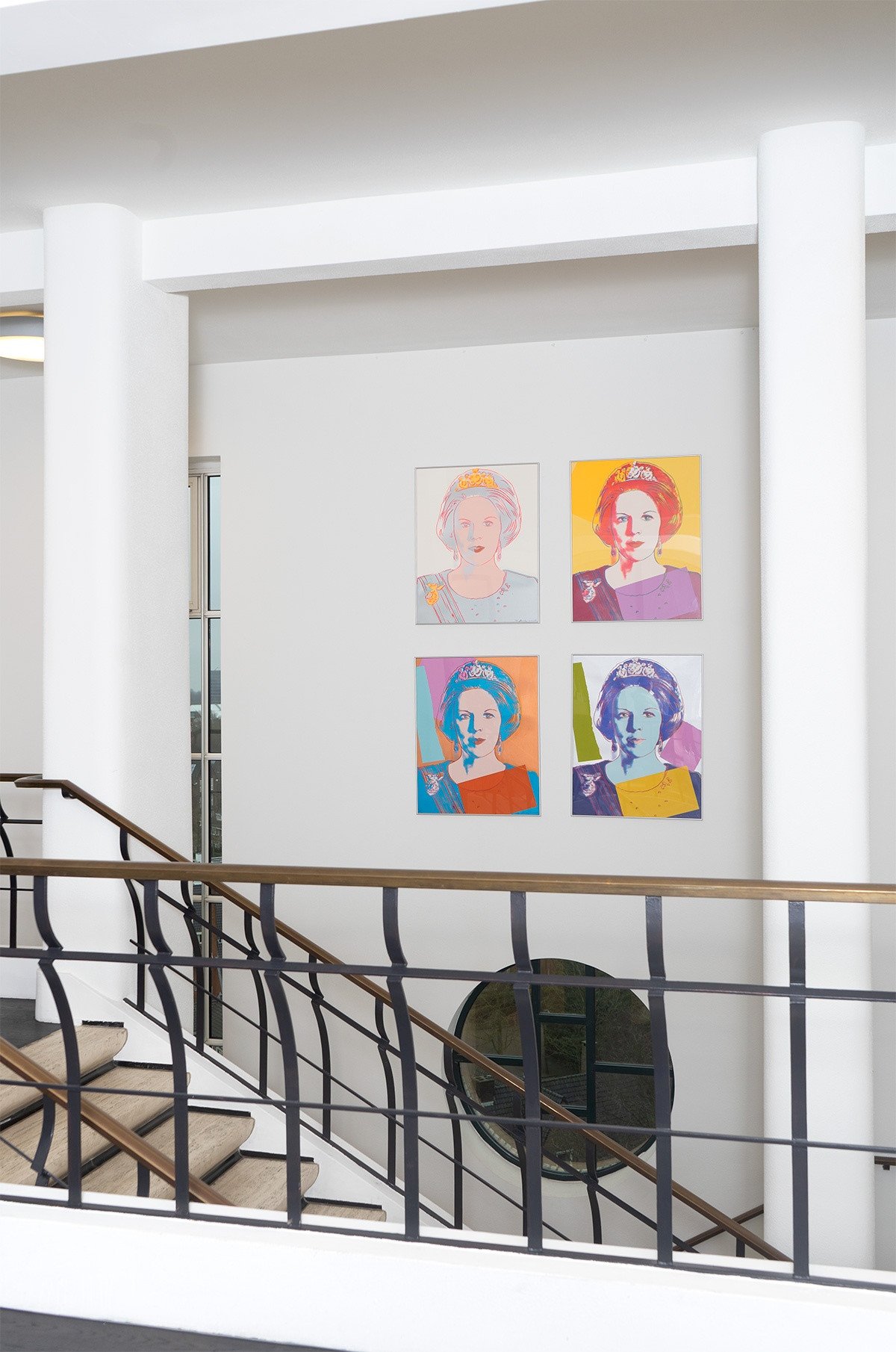

Andy Warhol (b. 1928 – 1987)
Queen Beatrix of the Netherlands

Andy Warhol’s work hardly needs an introduction. Everyone is familiar with the paintings and screen prints of the most important artist to come out of the Pop Art movement, who would change the world of art forever in the 1960s. His Marilyns, Maos, Mick Jaggers and stylised portraits of many other celebrities, but also his Flowers, Campbell’s soup cans and Brillo boxes all carry that typical Warhol signature with which we are familiar. Items inspired by his work come in the form of clothing, mousepads, and coffee mugs and are featured in magazines.
The influence of Warhol should not be underestimated. Even though the content of the work has often been described as “empty” and “banal”, the way in which he continuously produced paintings, screenprints, films and photos in his studio, provocatively named “the Factory”, has been a guiding dynamic for the visual arts in the second half of the 20th century. The almost factory-like process of elevating everyday objects from the consumer society, such as promotional items and newspaper photos, into art, was innovative and revolutionary. Using the technique of screen printing, he was able to endlessly repeat images on almost any surface. This way of producing also explains the serial nature of much of his work.
Trained as an advertising artist, he also knew exactly how to use the media like no other. Not only did he use the media to decide on his subjects, but he also shamelessly used them to publicise his work and himself.
This set with four portraits of former Queen Beatrix has been in Allen & Overy’s possession for a long time. It’s part of the Reigning Queens series, which also includes Elizabeth of England, Margrethe II of Denmark and Ntombi Twala of Swaziland; the only four ruling queens at that time. Containing sixteen sheets, it is the most extensive portfolio he produced and it appeared in an edition of 40 copies. The photographs Warhol based the works on are either official state portraits or portraits published in print media. He placed colourful surfaces on top as if it were a collage, and he accentuated details such as crowns, jewels and hairdos with screen-printed, drawing-like lines. Warhol also made a luxurious Royal edition of this series, to which he added a layer of sparkling diamond dust.
His work is now selling for huge sums at major international auctions. This set is highly sought after and very costly, even without the additional diamond grit.
